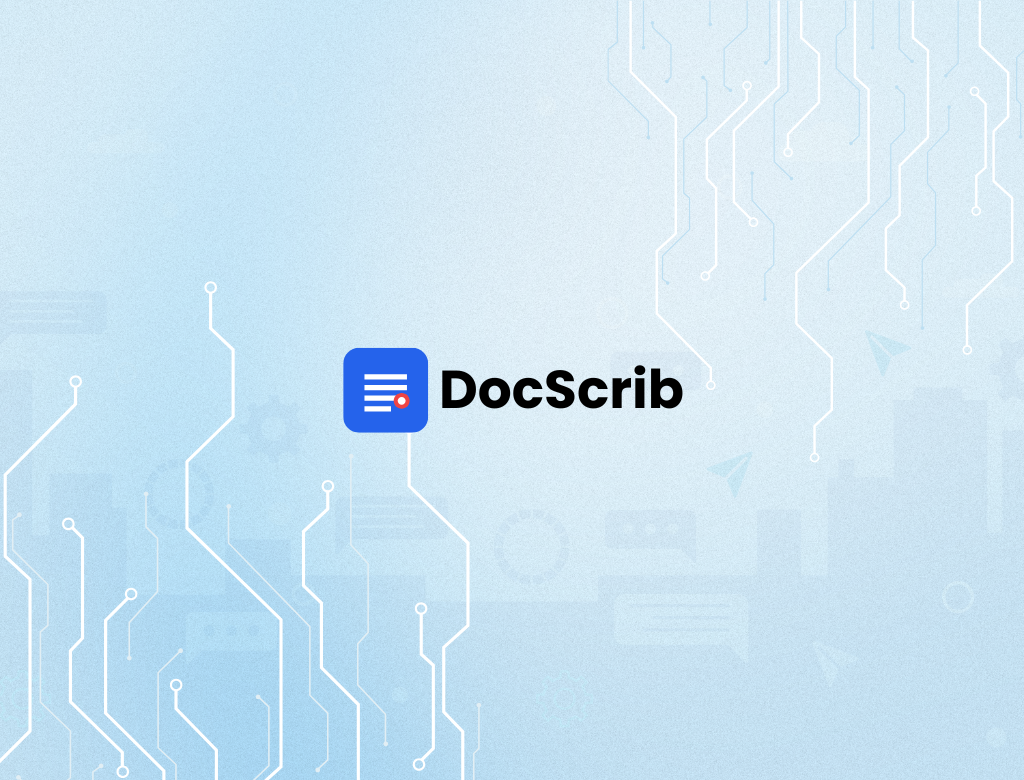In today’s fast-paced healthcare environment, documentation is both a necessity and a burden. While EHR systems were introduced to streamline workflows and reduce errors, they have inadvertently become a major contributor to clinician burnout. But there’s a silent revolution underway—AI medical scribes are changing the game.
Welcome to the era of intelligent documentation. This article explores the transformative role of AI medical scribes and why they are becoming essential tools for happier clinicians and more efficient healthcare systems.
What Is an AI Medical Scribe?
An AI medical scribe is a digital assistant powered by artificial intelligence that listens to doctor-patient conversations in real time and automatically generates structured clinical documentation. Unlike traditional human scribes or voice-to-text software, AI scribes understand context, identify medical terms, and integrate directly into EHRs—saving clinicians valuable time.
DocScrib, for example, is leading this innovation with cutting-edge technology that adapts to multiple specialties and integrates seamlessly into existing workflows.
👉 Learn more about how DocScrib works: https://docscrib.com/
The Problem: Burnout from Documentation Overload
The Stats Don’t Lie
-
On average, physicians spend 35–50% of their day on EHR documentation.
-
More than 60% of clinicians report burnout, with administrative burden cited as a top cause.
-
Many doctors spend 2+ hours after clinic hours completing charting.
These aren’t just statistics—they’re red flags waving across every hospital and private practice.
How AI Medical Scribes Solve the Problem
1. Real-Time Documentation
AI medical scribes like DocScrib listen to conversations and generate SOAP notes instantly. No more late-night charting. No more typing during patient visits.
2. Contextual Understanding
These scribes are trained on clinical language models. They don’t just transcribe—they interpret. Whether you’re a pediatrician or orthopedist, the scribe understands and adjusts accordingly.
3. EHR Integration
AI scribes integrate with popular EHR platforms, minimizing clicks and toggles, and allowing clinicians to review and sign off with ease.
4. HIPAA-Compliant and Secure
DocScrib is fully HIPAA-compliant, ensuring your patient data is protected with enterprise-grade encryption and privacy standards.
Role of AI Medical Scribes in Different Clinical Settings
🏥 Hospitals
-
Increase patient throughput
-
Ensure documentation accuracy during handoffs
-
Support multi-specialty workflows at scale
🩺 Private Practices
-
Free up physician time for direct patient care
-
Improve patient satisfaction with more face-to-face time
-
Reduce costs by replacing expensive manual scribes
🧠 Mental Health Clinics
-
Capture sensitive conversations with nuance
-
Support therapists in multi-session tracking
-
Maintain empathy-driven, unobtrusive note-taking
Why AI Medical Scribes Make for Happier Clinicians
Clinicians didn’t go to medical school to become data entry clerks. Yet many feel more like typists than healers.
By offloading documentation tasks, AI scribes restore the joy of practicing medicine. Here’s how:
-
💬 More Eye Contact: Focus on patients, not screens
-
⏱ Time Savings: Up to 3 hours saved per day
-
😌 Reduced Stress: No more after-hours charting
-
📈 Improved Accuracy: Fewer errors, better billing
These benefits aren’t hypothetical. They’re being realized every day by DocScrib users across the country.
How DocScrib Stands Out in the AI Scribe Landscape
While other solutions exist, DocScrib brings several key advantages:
| Feature | DocScrib | Traditional Scribe | Voice-to-Text Tools |
|---|---|---|---|
| Real-Time Capture | ✅ | ❌ | ✅ |
| Medical Context Understanding | ✅ | ✅ | ❌ |
| Specialty Adaptation | ✅ | ✅ | ❌ |
| EHR Integration | ✅ | ❌ | ❌ |
| HIPAA-Compliant | ✅ | ✅ | ❌ |
| Cost-Effective | ✅ | ❌ | ✅ |
👉 Ready to see how DocScrib can work for your practice?
Book a Free Demo Today
The Future: AI Medical Scribes as Clinical Partners
The future of clinical care is collaborative, not clerical. AI scribes won’t replace doctors—they’ll support them. In the coming years, expect AI to:
-
Personalize documentation templates by specialty
-
Flag billing codes and reimbursement opportunities
-
Summarize multi-visit histories
-
Support multilingual note generation
And tools like DocScrib are already building this future.
Final Thoughts: From Burnout to Balance
The role of AI medical scribes is no longer experimental—it’s essential. As clinician well-being, patient satisfaction, and operational efficiency become critical success metrics, AI scribes are poised to become a core part of every care team.
If you’re a clinician seeking to reclaim your time, reduce stress, and deliver better care, AI medical scribes like DocScrib offer a clear path forward.
